This was published 5 years ago
Berlin travel guide and things to do: 10 reasons to visit during the 30th anniversary of the fall of the wall
By Brian Johnston
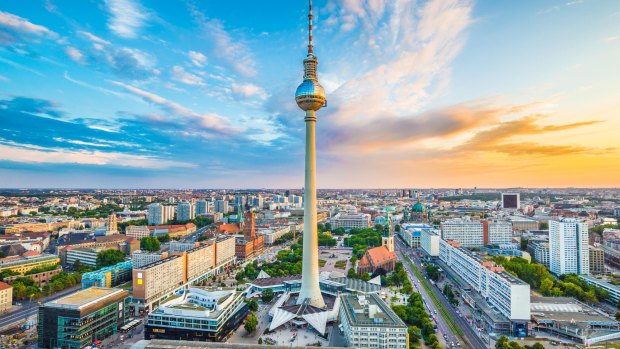
Thirty years after the wall fell, Berlin has become one of the world's greatest destinations.Credit: Alamy
The first barbed-wire coils of what would become the Berlin Wall were rolled out in August 1961. Soon, this barrier would become infamous for creating the cut-off enclave of free West Berlin inside socialist dictatorship East Germany, and slicing Berlin's city centre in two.
The Berlin Wall stood, in several different forms, for 28 years until the evening of November 9, 1989, when Berlin's citizens rose up and, with hammers, pickaxes and their bare hands, consigned to history their contentious, reinforced-concrete border. It was a peaceful revolution and scenes of Berliners dancing atop the Wall provided one of the great media moments of the late 20th century.
The Berlin Wall was more than just a wall. By the 1980s it was two walls, a string of watchtowers and fences, a series of anti-vehicle trenches and a barren "death strip" where escapees could be – and were – shot on sight. There is no official figure on how many lost their lives – perhaps 200. More than 5000 people managed to escape, some in ingenious ways, including the use of zip-lines, tunnels and even a stolen army tank.
The Berlin Wall didn't just separate friend and families. It was also an ideological barrier, the physical incarnation of the Iron Curtain that divided western capitalism from eastern communism. It was the Cold War in concrete, and a symbol beloved of spy movies and novels.
Today little remains of this monument to the Cold War in Berlin, since most of it was either destroyed or souvenired. Cobblestones and metal strips mark its former location in the city centre, and small (yet still sinister) sections remain. The city recalls its Cold War past, however, in various museums, memorials and sites around the city.
Throughout this year, which marks the 30th anniversary of the fall of the Berlin Wall, there will be added levels of interest as key sites host special exhibitions, events and commemorations that provide an even more compelling look at this paranoid, politically charged and – from the perspective of passing time – utterly bizarre period in European history.
To Germany's credit, Berlin today has a gracefully restored and reunited city centre and is one of Europe's most multi-ethnic, youthful, tolerant and energetic cities. Yet it doesn't whitewash its past, and continues to grapple with legacies of its Nazi and Cold War eras. It preserves these memories at informative, interesting and often unflinching historical sites. Few cities are as pleasant and vibrant to visit, and yet as insightful and sometimes confronting too, making this one of the world's great destinations for the thoughtful traveller.
THE MONUMENT BRANDENBURG GATE
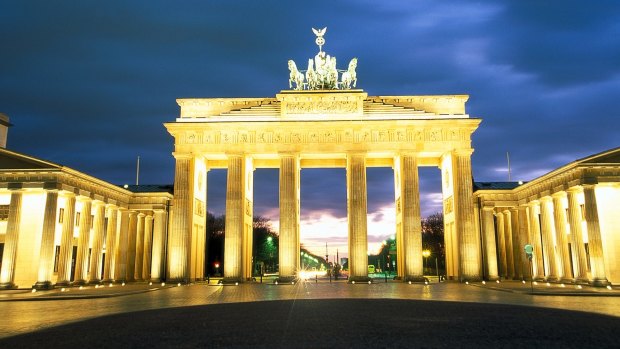
Credit: German National Tourist Board
WHY SEE IT
This neoclassical triumphal arch is Berlin's symbol. The square around it sees festivals, celebrations, marathons, rallies and New Year's Eve fireworks.
THE HISTORY
Brandenburg Gate was completed in 1791 as a monumental entrance to Unter den Linden Boulevard leading to the Prussian royal palace. The Berlin Wall ran close to the Gate, which became the symbol of a divided Europe. Reopened after extensive renovations in 2002, it now stands for freedom and German unity.
WHAT TO SEE
The Gate itself, the Quadriga statue at its summit depicting a horse-drawn chariot, and surrounding Pariser Platz, an elegant square of embassies, town houses and the famous Adlon Hotel.
DON'T MISS
The Room of Silence in a flanking guardhouse, with its wall-hanging depicting light penetrating the darkness of a forest.
ESSENTIALS
Always open, free admission. See visitberlin.de
THE MEMORIAL BERLIN WALL MEMORIAL
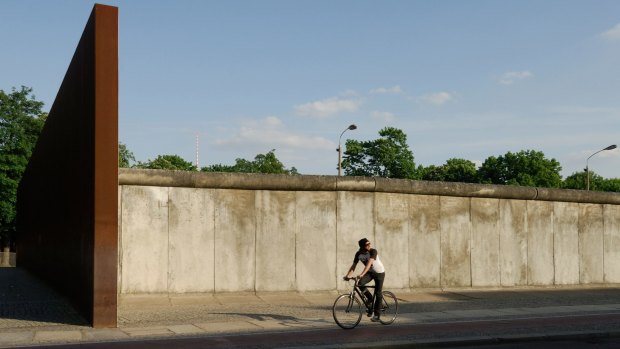
Credit: Alamy
WHY SEE IT
This surviving 60-metre section of Wall (and watchtower) was the scene of several significant Cold War events. Escapee Ida Siekmann became the first known casualty of the Berlin Wall here just nine days after its construction.
THE HISTORY
The memorial was created in 1998 on Bernauer Strasse, a Berlin street made famous in August 1961 when images of East Germans leaping from apartment windows into the French sector were beamed around the world. This was the first part of the Wall to come down in November 1989.
WHAT TO SEE
An open-air exhibition details the Berlin Wall's appearance in the 1980s and how the border was organised. A visitor centre outlines its construction.
DON'T MISS
The Chapel of Reconciliation, a striking, contemporary commemoration of the 130 people who lost their lives crossing the Berlin Wall.
ESSENTIALS
Exhibition and grounds open 8am to 10pm daily, admission free. See berliner-mauer-gedenkstaette.de
THE TOURIST SITE CHECKPOINT CHARLIE
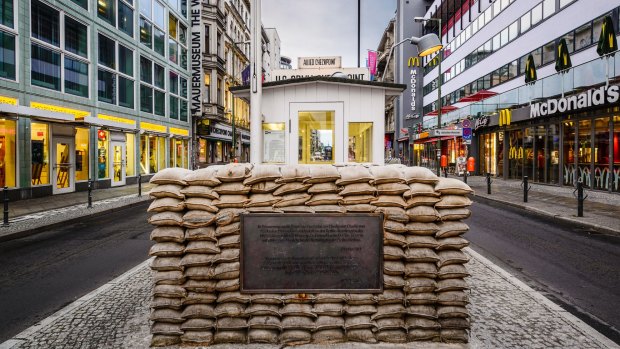
Credit: Alamy
WHY SEE IT
This infamous checkpoint between Berlin's American and Soviet sectors is a kitschy reconstruction, but does provide a sense of deja vu for aficionados of spy movies and espionage novels.
THE HISTORY
This was one of few Berlin Wall crossing points and the only one permitted to westerners. American and Soviet tanks famously faced off here in 1961. The original checkpoint and guardhouse was entirely removed in 1990.
WHAT TO SEE
This is a place to capture some Zeitgeist rather than sight see, though information boards outline the checkpoint's history. A pseudo-guardhouse fronted by sandbags is a tourist magnet, but bears scant resemblance to the original.
DON'T MISS
Private museum Haus am Checkpoint Charlie (mauermuseum.de) documents the inventive, dramatic and sometimes fatal escapes across the Berlin Wall by East Germans.
ESSENTIALS
Always open, admission free. See visitberlin.de
THE FESTIVAL 30TH ANNIVERSARY YEAR
WHY SEE IT
If you hanker to see Berlin or investigate the Cold War years, do it this year, as special events highlight this peculiar period in the city's history.
THE HISTORY
Thirty years since the fall of the Berlin Wall, the city is commemorating by taking a new look at the Wall's history, East Berlin's struggle for freedom and the German reunification process.
WHAT TO SEE
There are events all year, so check what's on during your visit. Among them are exhibitions on the Berlin airlift, Stasi (secret police) operations and East Germany's once boarded-up "ghost station" metro stops.
DON'T MISS
The million-strong German Unification Day street party on October 3, an annual family event of live music, food and carnival rides that promises to be bigger than ever this year – although unification's 30th anniversary isn't until 2020.
ESSENTIALS
See visitberlin.de
THE MUSEUM GERMAN SPY MUSEUM
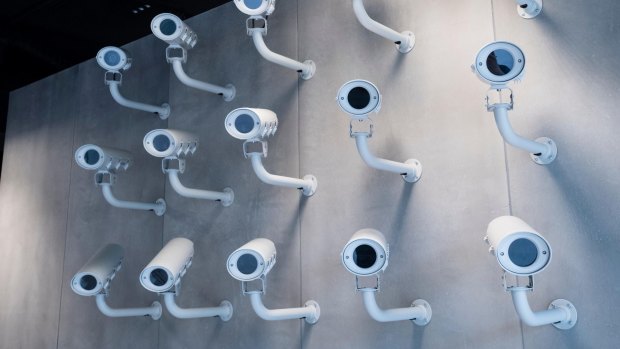
Credit: Alamy
WHY SEE IT
Put the Berlin Wall and Cold War into context in this excellent interactive museum, which details many of the era's political dramas and the dealings of its shadowy agents.
THE HISTORY
The museum was opened in 2015. It focuses on the Cold War period and some of its most notorious spies and assassins. As a reminder that history repeats itself, though, the museum also traces several millennia of spycraft, from ancient Babylon and Tudor times to World War II.
WHAT TO SEE
The collection of Cold War weapons, transmitters and recorders concealed within everyday items such as umbrellas and telephones is particularly fascinating.
DON'T MISS
If you have kids, they'll love the laser room. The aim is to wiggle through it, like Catherine Zeta-Jones in Entrapment, in record time.
ESSENTIALS
Open daily 10am to 8pm, admission €12. See deutsches-spionagemuseum.de
THE ART EAST SIDE GALLERY
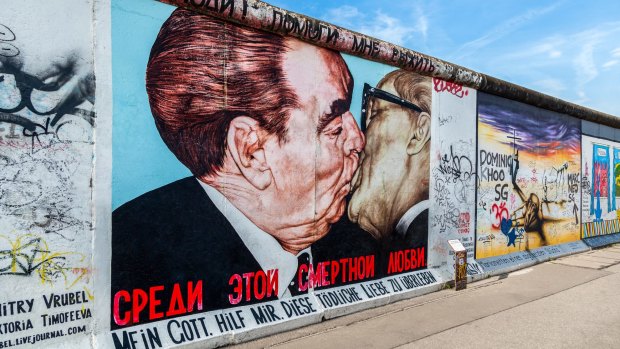
Fraternal Kiss, a recreation of an actual 1979 embrace between Soviet leader Leonid Brezhnev and East German leader Erich Honecker.Credit: SHUTTERSTOCK
WHY SEE IT
This chunk of concrete along the Spree River is the longest surviving section of original Berlin Wall (1.3 kilometres). Now covered in some 100 artworks, it's billed as the world's longest open-air art gallery.
THE HISTORY
Artists started daubing the Wall almost immediately following the border's opening in November 1989. Soon, graffiti was ruining the originals. The site was declared a protected memorial in 1991 and its artworks restored or repainted.
WHAT TO SEE
The best artworks comment on the Wall's fall and subsequent social changes in East Germany. Take an informative guided tour at 10am on Saturdays with the Berlin Wall Foundation, if you can.
DON'T MISS
The most famous mural is Fraternal Kiss, a recreation of an actual 1979 embrace between Soviet leader Leonid Brezhnev and East German leader Erich Honecker.
ESSENTIALS
Always open, admission free, tours €3.50. See eastsidegalleryberlin.de
THE DISPLAY BLACKBOX COLD WAR
WHY SEE IT
This flat, black building near Checkpoint Charlie is dedicated to Cold War artefacts, but also links to Cold War politics and events beyond Berlin, such as the Korean War and Cuban missile crisis.
THE HISTORY
Dark walls on this building are emblazoned with grey multilingual terms such as "Espionage" and "Democracy". It was opened in 2012 as a temporary exhibition space before the construction of a permanent Museum of the Cold War.
WHAT TO SEE
Large-format photos of Cold War events and the no-man's-land that ran along the Berlin Wall are particularly striking. Watch historical film excerpts in the cinema and listen to Berliners recalling Cold War memories at 16 media stations.
DON'T MISS
A Soviet radiation dosimeter used to measure radioactivity levels, which is a reminder of how close the world came to nuclear war.
ESSENTIALS
Open daily 10am to 6pm, admission €5. See bfgg.de
THE DISTRICT POTSDAMER PLATZ
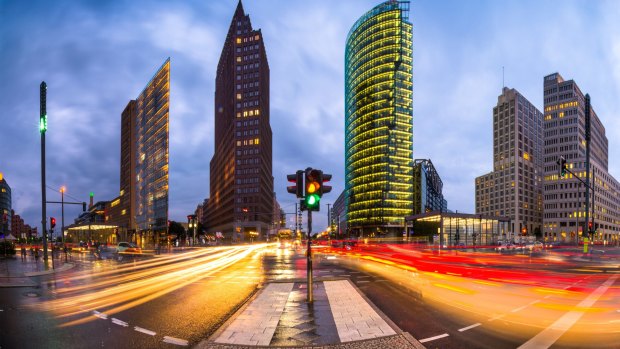
Credit: Alamy
WHY SEE IT
No part of Berlin better symbolises its fall and rise. Corporate headquarters designed by famous architects rise from a former wasteland. Its few remnants of Wall seem surreal and inconsequential.
THE HISTORY
This square had its origins in the 17th century and its heyday in the early 20th before it was flattened in World War II. A location at the intersection of American, British and Soviet sectors saw it abandoned. In the 1990s an entirely new district arose.
WHAT TO SEE
Metal strips mark where the Berlin Wall once ran. Scan the QR code at Deutsche Bahn Tower for a look at the square's changing face through time. An old GDR watchtower lingers on Erna-Berger-Strasse.
DON'T MISS
Six re-erected segments of much-graffitied Wall stand outside the entrance to the train station, alongside information boards.
ESSENTIALS
Always open, admission free. See potsdamerplatz.de
THE ACTIVITY BERLIN WALL TRAIL
WHY SEE IT
Take to the flat, paved cycleway (divided into 14 sections) that follows the 160-kilometre former location of the Wall. Signs 3.6 metres high – the height of the Berlin Wall – point the way.
THE HISTORY
The trail follows the old East German patrol path and West German customs route along the Wall. It was completed in 2006.
WHAT TO SEE
There are various Wall segments, plus informal memorials to escapees, such as plaques and crosses. At times, you cycle through fields and woodland, along canal banks and through villages such as Lubars and royal summer retreat, Potsdam.
DON'T MISS
The Church of the Redeemer in Sacrow, infamous because the Berlin Wall ran straight through it. It now presents a pretty Italianate picture on a lakeshore.
ESSENTIALS
Bicycle rentals from €10 s day. Guided tour of a 15-kilometre segment €24 including bike hire. See berlinonbike.de
THE CELEBRATION FALL OF THE WALL
WHY SEE IT
The 30th anniversary of the Berlin Wall's demise will see seven city sites, all key during the events of 1989-90, feature special celebrations and open-air exhibitions.
THE HISTORY
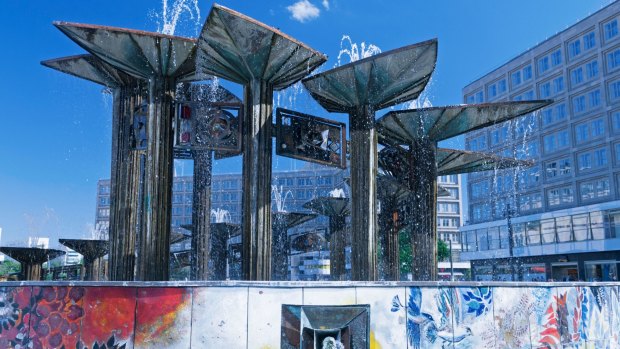
Credit: Alamy
Among the venues for the celebrations will be Brandenburg Gate, East Side Gallery, the 1960s East German creation Alexanderplatz, and Gethsemane Church in Prenzlauer Berg district, whose congregation played a central role in 1989 protests against the GDR.
WHAT TO SEE
A "Route of Revolution'" will connect Cold War venues, which will host concerts, film screenings, artworks and sound-and-light installations such as protestors' demands to abolish the GDR's secret police, beamed onto the facade of the former Stasi headquarters.
DON'T MISS
The culminating, city-wide music festival on the evening of November 9, featuring singers and musicians with connections to the Berlin Wall's fall.
ESSENTIALS
The festival runs from November 4-10, 2019. See visitberlin.de
A SHORT HISTORY OF THE BERLIN WALL
1945 World War II ends. Berlin is divided into American, British, French and Soviet sectors.
October 7, 1949 The Soviet-controlled German Democratic Republic (or East Germany) is declared.
1952 The border between the two Germanys is closed, but Berlin remains relatively porous. By 1961, 20 per cent of East Germany's population has departed.
August 13,1961 East Berlin's border is closed on Barbed Wire Sunday. Fencing and concrete blocks are erected.
1975 Following several incarnations, construction begins on a reinforced-concrete Berlin Wall – the one most people remember – and is completed over several years.
1987 American president Ronald Reagan challenges the Soviet president at Brandenburg Gate: "Mr Gorbachev, tear down this Wall!"
1989 Chris Gueffroy is the last person shot and killed at the Wall. Winfried Freudenberg is the last person killed in an escape attempt when his hot-air balloon crashes. The Soviet Bloc disintegrates. There are mass demonstrations in East Germany.
November 9, 1989 East German radio announces its border are open. People stream towards the Berlin Wall, which is breached in places.
June 13, 1990 East Germany begins to officially dismantle the Wall, an 18-month task.
October 3,1990 Germany is reunified.
EAST GERMAN THROWBACKS
Nostalgia for some aspects of life in East Germany has given rise to the term "ostalgie". Look out for these classic GDR products.
AMPELMANN
The distinctive walking man on green traffic lights at pedestrian crossings was introduced to East Berlin in 1961 and brought back by popular demand after reunification. The cult figure now has its own shops and memorabilia. See ampelmann.de
TRABANT
The rattling, poorly designed East German car affectionately known as the Trabi ceased production in 1991, but some companies offer Trabi tours or rentals. Inspect the iconic car's many incarnations at the Trabi Museum. See trabi-museum.com
EINKAUFSNETZ
This classic waxed-string shopping bag with leather handles was a necessity in an East Germany short of plastic. The once-derided bag's nostalgic comeback has been helped along by newfound environmental concerns about single-use plastics.
VITA COLA
Vita Cola, less sweet, thicker, fruitier and more lemony than rival colas, was introduced to the GDR in 1957 but succumbed to western brands when the Wall fell. It's now back and outsells Pepsi in the former East Germany.
KETWURST
The name of East Berlin's answer to the hotdog is a portmanteau of ketchup and wurst, or sausage. It emerged in the late 1970s and is now only available in limited places such as Alain Snack Bar in Prenzlauer Berg. See ketwurst.com
BERLIN BEYOND THE WALL
Berlin isn't just a Cold War remnant but one of Europe's most vibrant, cosmopolitan and enjoyable cities.
CULTURE
What bombed-out Berlin lacks in palaces and monuments it makes up for with museums. Museum Island alone presents a world-class congregation of museums whose collections range from Greek and Roman sculpture to Near Eastern antiquities, Islamic art and European painting. See smb.museum
SHOPPING
The city's main shopping district around Kurfurstendamm, commonly called Ku'Damm, sees department stores, chic boutiques and side-street speciality stores mix. Europa Centre is Berlin's biggest shopping mall and one of Europe's largest entertainment complexes. See europa-center-berlin.de
BEACHES
Landlocked Berlin has a great array of artificial urban beaches, especially along the Spree River. Why would an Aussie bother? Because they feature cocktail bars, nightclubs, samba dance evenings and other fun – or if nothing else, provide passing spots for a relaxing beer or two. See visitberlin.de
SIGHTSEEING
The madly ornate, baroque-era Charlottenburg Palace, sprawling Tiergarten park and the Reichstag or parliament building are three key sights. You should also visit World War II memorials such as the confronting Memorial to the Murdered Jews of Europe. See stiftung-denkmal.de
NIGHTLIFE
Plentiful pubs, clubs and dance halls, cabaret and avant-garde theatres, year-round festivals and even fetish houses make Berlin a top city for evening shenanigans. Hit Prenzlauer Berg, Kreuzberg or Friedrichshain districts and you won't be crawling home until the wee hours. See visitberlin.de
Etihad flies from Sydney and Melbourne to Abu Dhabi with connections to Berlin via Dusseldorf. See etihad.com
STAY
Lux Eleven Berlin-Mitte has big rooms with kitchenettes and sitting areas, and is well located in Berlin's trendy Mitte district. See lux-eleven.com
Brian Johnston was a guest of the German National Tourist Office and Visit Berlin.
Sign up for the Traveller Deals newsletter
Get exclusive travel deals delivered straight to your inbox. Sign up now.